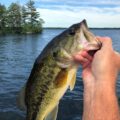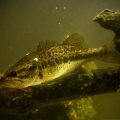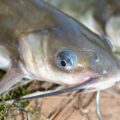Understanding the differences between catfish and white bass is crucial for both anglers and those interested in freshwater fish species. Catfish and white bass are commonly found in various water systems across North America and are both popular among fishing enthusiasts for different reasons. They belong to different fish families and display distinct physical features, behaviors, and habitats that set them apart from each other.
Catfish, belonging to the order Siluriformes, are easily recognized by their barbels, which resemble a cat’s whiskers, and typically have scale-less bodies. They are known to inhabit slower-moving waters where they feed primarily on bottom-dwelling organisms. The behavior of catfish varies greatly from white bass. Moreover, their varied species come in a range of sizes, from small to very large, with some capable of living in both fresh and saltwater environments.
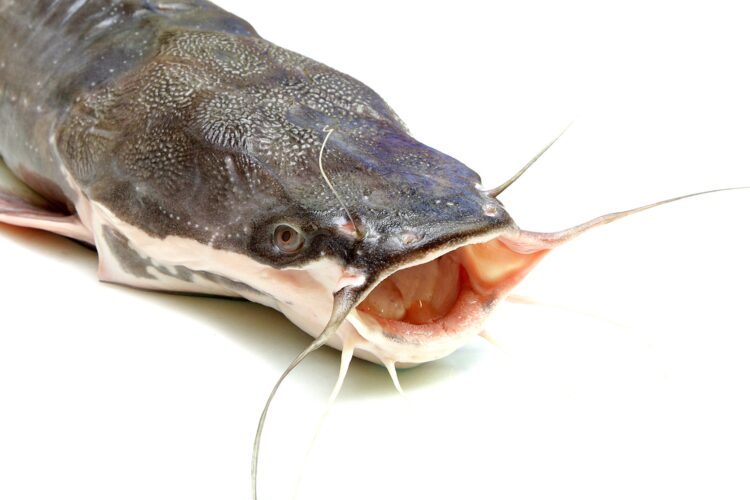
White bass, on the other hand, are part of the Moronidae family and are easily identifiable by their silver-flashing sides and lines that run horizontally along their bodies. Known for their schooling behavior, they are often found in more open waters and exhibit different feeding habits compared to catfish. They are predominantly found in freshwater environments and are known for making seasonal migrations, which is a behavior not typically seen in catfish.
Fundamental Characteristics
The key distinguishing features between catfish and white bass lie in their anatomical structures. These differences are crucial for identification and understanding their respective behaviors and habitats.
Anatomy of Catfish
Body Shape: Catfish typically possess a cylindrical and elongated body, which is not compressed laterally. Their skin is devoid of scales, giving them a smooth texture.
Barbels: One of the most notable features of catfish are the whisker-like barbels around their mouths, which are used for sensing the environment and searching for food.
Fins: They have a long, single, spineless dorsal fin and a deeply forked tail. The pectoral and dorsal fins usually have a sharp spine which can be used for defense.
Anatomy of White Bass
Body Shape: White bass are distinguishable by their laterally compressed bodies, more akin to the typical ‘fish shape.’
Scales: They have silvery-white sides with dark, horizontal stripes running from head to tail, and their bodies are completely covered with scales.
Fins: The dorsal fin is separated into two parts, with the anterior part containing spines and the posterior part being soft-rayed. Their tail fin is moderately forked.
Habitat and Distribution
The habitats of catfish and white bass vary significantly due to differences in their environmental preferences and geographical range.
Catfish Habitats
Catfish are primarily freshwater fish known for their preference for standing or slow-moving bodies of water. They are widely distributed across the globe, with the majority dwelling in North America, Europe, Asia, and Africa. Specific habitats include:
- Rivers and Streams: They often inhabit the bottom where the current is more moderate.
- Lakes and Ponds: Muddy bottoms with ample cover like logs and debris are preferred.
- Estuaries: Some species can also thrive in low-salinity conditions.
White Bass Habitats
White bass, in contrast, are native to North America, especially common in the Midwest and Eastern United States. They are found in a variety of freshwater habitats, typically where there is:
- Clear and Open Water: They prefer large lakes and reservoirs with access to open water.
- Moderate Currents: River systems with moderate flow are also prime habitats for white bass, particularly during spawning season.
Dietary Habits and Prey
Catfish and white bass exhibit distinctive dietary patterns that reflect their different habitats and feeding behaviors.
Catfish Diet
Catfish are predominantly bottom-dwellers and their diet reflects their scavenging nature. They consume a wide variety of food sources, including:
- Insects: aquatic larvae and adult forms.
- Crustaceans: crayfish and small shrimp.
- Plant Material: algae and small aquatic plants.
- Fish: live and dead, including minnows and other small fish.
- Detritus: decomposing plant and animal matter.
Catfish are known to use their barbels to sense food in murky waters where visibility is low.
White Bass Diet
White Bass, in contrast, are more active predators and primarily feed in the water column. Their diet mainly consists of:
- Small Fish: including shad and other forage fish.
- Insects: flying insects that land on the water surface.
- Crustaceans: when available, usually in juvenile stages.
White bass are also known for their tendency to feed in schools during spawning runs of their prey, making them effective hunters.
Fishing Techniques
When targeting catfish or white bass, anglers must adopt different strategies. Fisheries’ behaviors, habitats, and feeding patterns dictate the nuances of effective fishing techniques for each species.
Fishing for Catfish
Catfish are bottom-dwellers known to favor bait with strong odors. Anglers often employ a still fishing technique, where bait such as chicken liver, nightcrawlers, or stink bait is placed on or near the bottom. For larger catfish, live bait like bluegills may be more effective. To increase success rates:
- Use a heavy sinker to keep bait on the bottom.
- Opt for a stronger line, as catfish can grow quite large and put up a substantial fight.
Techniques like noodling—catching catfish with bare hands—are also practiced but are more dangerous and require specific local knowledge.
Fishing for White Bass
White bass, in contrast, are active predators that often hunt in schools. Anglers targeting white bass typically use lures resembling small fish or employ light tackle spinning techniques. Key tactics include:
- Cast and retrieve methods with inline spinners or small crankbaits.
- Trolling is effective, especially during spawning runs when white bass move upstream in large numbers.
It’s also beneficial to be on the water during feeding times, such as dusk or dawn, when white bass are most actively hunting.
Economic and Ecological Impact
The economic and ecological impacts of catfish and white bass are significant, each contributing differently to local economies and ecosystems.
Catfish Industry
The catfish industry is a major economic player, particularly in the United States. Farm-raised catfish are a staple in the aquaculture sector, contributing substantially to economic growth in agricultural states. In 2020, the U.S. catfish industry generated $398 million in sales. Employment in this sector is pivotal, with many jobs spanning from hatchery operations to processing plants.
| Year | U.S. Catfish Production (Millions of Pounds) | U.S. Catfish Sales (Millions of USD) |
|---|---|---|
| 2018 | 370 | 380 |
| 2019 | 380 | 390 |
| 2020 | 370 | 398 |
Ecologically, catfish farming can impact local water bodies. They often require a high level of nutrients and can lead to eutrophication if not managed properly. However, strict regulations have been implemented to mitigate pollution from catfish farms.
White Bass Significance
White bass contribute to the ecosystem by their role as both predator and prey. As a popular game fish, they support a vibrant recreational fishing industry, which can boost local economies through tourism. Anglers seek white bass for their spirited fight and fair table fare, making them a target for fishing tournaments and outdoor recreational activities. They play a crucial role in maintaining the health of aquatic systems by controlling populations of smaller forage fish.
In terms of population dynamics, white bass can occasionally overpopulate and dominate water systems, which can lead to decreased biodiversity. Management strategies often need to be employed, such as regulated fishing seasons and bag limits, to ensure a balanced ecosystem. These regulations are enforced to maintain sustainable white bass populations and to uphold the economic benefits of fishing industries.
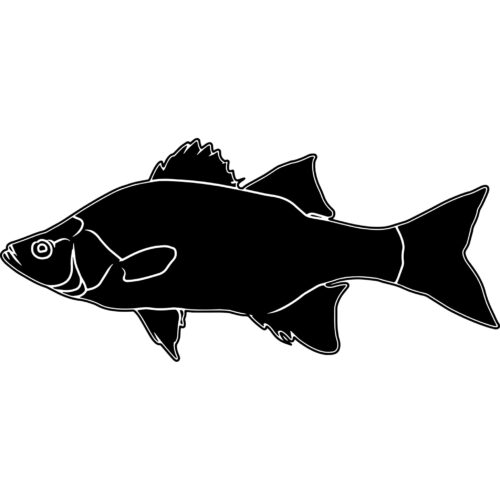
Recreational Fishing
Recreational fishing for catfish and white bass offers distinctive experiences due to differences in habits, habitats, and the techniques used to catch each species.
Popularity of Catfish Fishing
Catfish fishing is popular among anglers for its year-round availability and the simple gear requirements. Channel catfish, blue catfish, and flathead catfish are sought after in many regions, particularly in the southern and midwestern United States. They are prized for their taste and the challenge they present: catfish are known for their strong fight when hooked. Night fishing for catfish is a common practice, as these fish are nocturnal feeders.
- Preferred Techniques: Still-fishing with live or dead bait, jug fishing.
- Bait Options: Nightcrawlers, chicken liver, stink baits.
- Common Locations: Rivers, lakes, and ponds.
Popularity of White Bass Fishing
White bass fishing becomes especially popular during the spring spawning run. Anglers often find white bass in large schools, providing an exciting and fast-paced fishing experience. They are primarily found in freshwater lakes and rivers throughout the central United States. While not as prominent for their size as catfish, white bass are known for their aggressive strikes and vigorous fight, which makes them appealing to anglers seeking an active fishing session.
- Preferred Techniques: Casting with small lures, trolling, fly fishing.
- Bait Options: Minnows, jigs, crankbaits.
- Common Locations: Mid-depth open waters, river channels during spawn.
Conservation Status
Catfish Conservation Concerns
Different catfish species face varying levels of conservation concerns. For instance, the Channel Catfish (Ictalurus punctatus) is currently classified as Least Concern due to its wide distribution and large populations. Conversely, certain species like the Yaqui Catfish (Ictalurus pricei) are listed as Endangered, primarily due to habitat loss and water pollution.
White Bass Conservation Efforts
The White Bass (Morone chrysops), a popular sport fish in North America, is not considered endangered. Conservation efforts include:
- Regulated Fishing Seasons: These prevent overfishing during spawning periods.
- Habitat Restoration: Projects are in place to improve water quality and habitat conditions, critical for spawning success.

